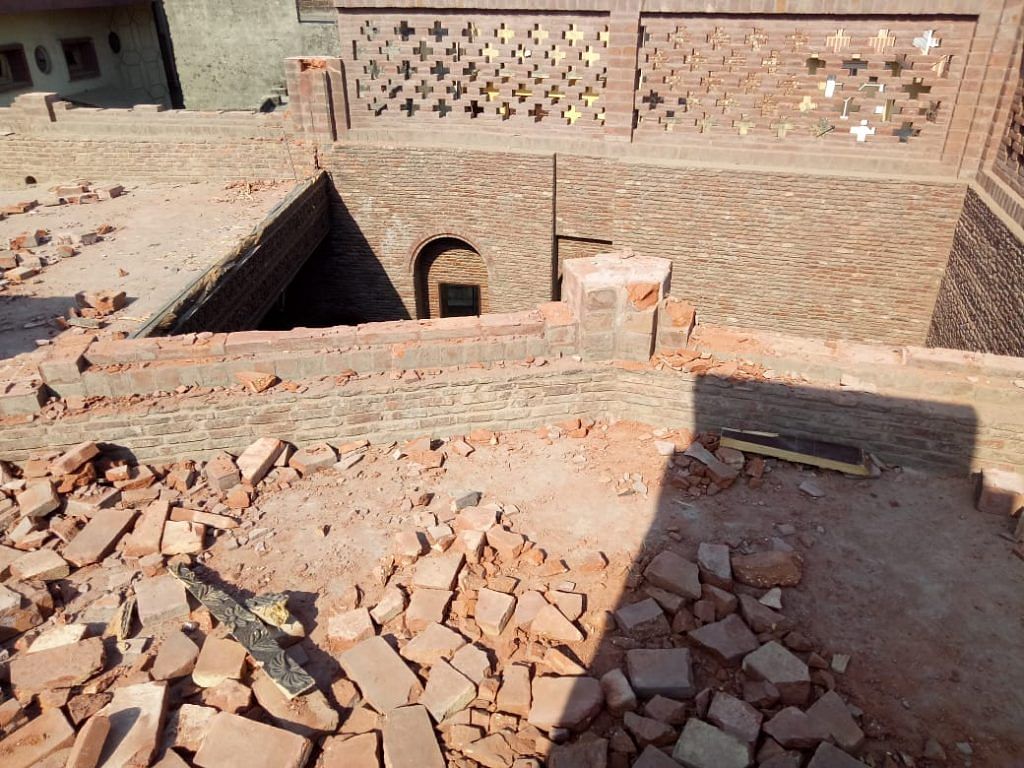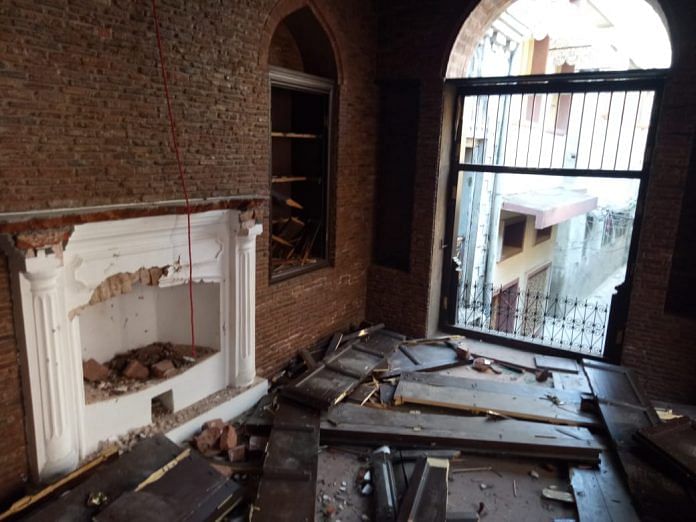The razing of the Sialkot mosque is the latest assault on the identity of Pakistan’s minority Ahmediya community amid the gradual stripping away of their space in recent times.
On the night of 23 May between the hours of 11 pm and 3 am, crowds in Sialkot, led by a Hamid Mirza and a conniving state machinery, brought down the Hakim Hassam ud din mosque. The mosque, associated with Pakistan’s much-maligned Ahmediya community, is poet-philosopher Allama Iqbal’s first educational institution. In its courtyard, Iqbal pursued his first school lessons.
Sialkot’s mayor called the 100-year-old building an illegal construction. Members of the Ahmediya community had been renovating this religious space, but Pakistan’s problematic laws give the municipal committee enough cause to seal the premises and clear encroachments.
The razing of the mosque is the latest assault on the identity of Pakistan’s minority Ahmediya community amid the gradual stripping away of their space in recent times.
It was on 7 September 1974, after a spate of anti-Ahmedi violence in Pakistan, that the seemingly liberal prime minister Zulfikar Ali Bhutto and his national assembly passed a bill declaring the Ahmedis as non-Muslim. Bhutto was someone the Ahmedis had supported and voted for. However, it was not until 1984 and Zia and his draconian regime that the Ahmediya community was stripped of all dignity. An Ahmedi could no longer refer to him/herself as a Muslim, and any act like practising his/her faith, issuing the call to prayers, making references to Quranic verses, proselytising, publishing and sharing religious material would be considered a crime.
Erasure of identity
Today, the community and their congregations are confined to small neighbourhood mosque groups. A silent administration refuses to provide adequate security, even after the 2010 Lahore massacre when terrorists attacked two Ahmediya mosques. As a result, in many places now, a silent and besieged Ahmediya community offers its Eid prayers before 6am lest it attracts attention.
All this while the community has consistently insisted that they be treated as one of Islam’s sects. But today, Ahmediya friends mourn the erasure of the two “I”s: No longer considered insaan (human) and eliminated as an entity to interact with.

It started as a sort of McCarthyism in the 1980s with anyone identifying as or sympathising with Ahmedis being purged from the media. Now Ahmedis are refused any forum to offer their side of the story, even as they are subjected to a relentless hate campaign questioning their Pakistani-ness and humanity. Social media has been helpful as a platform, but it is also a double-edged sword, spreading the hate.
In the brief span of time since I laughed, mourned and broke bread with my Ahmedi friends in university in the 1990s, I heard stories of gradual ‘othering’ of a community.
Was there ever a neighbour who offered to open his/her door to an Ahmedi family, which was forced to take down their satellite dish? In the 90s, the dish was needed to watch the Friday sermon delivered by the Ahmedi caliph in UK. But neighbours did not invite the Ahmedis to watch the prayers in peace in their homes. A young Ahmedi university student was asked by her hostel mates to explain her sectarian beliefs and then was promptly reported to university authorities. Nasim Babar, a Physics professor at Quaid-e-Azam University, was gunned down at his house for being an Ahmedi, but his colleagues chose to keep a stoic silence at the memorial meeting. It was left to his dear (and non-Ahmedi) friend Professor Niazi to speak passionately about the indifference of his peers.
After the 2010 Lahore massacre, a Pakistani news anchor with Express News, Mubasher Lucman, relented and offered screen time to an Ahmediya representative in a call-in show. This angered many, and he was duly chastised and made to feature a panel of ‘good Muslim’ maulvis on screen soon after to redress his transgression.
House of narratives
An Ahmedi friend mournfully claims that he cannot even do a head count of how many of our mutual acquaintances have been killed for their beliefs over the years.
Considering that Ahmediya religious spaces cannot be referred to as mosques/masjids lest one is accused of blasphemy, people have begun to use the term Bait ul Zikr (the house of narratives) instead for their mosques. These spaces offer you the tale of hidden geographies that lie within our cities – the missing voices and names of white-collar workers, academics, scientists, dentists, doctors, business people who picked up and left, leaving behind the leaflets slipped under their door and stuffed in their mail boxes threatening them. There are maps drawn in bigotry where suburbs contribute to the growing statistics of Ahmedi murders every month.
There are streets even the town planners ignore. The Ahmedis refuse to register themselves as non-Muslims, even running the risk of invoking blasphemy. But where will they bring identification documents to claim they are Muslims? The state has not given them any papers. So, they continue to live in limbo-land electorally. Politicians don’t see any incentive in including them in civic services because they are not a vote bank.
What is left for them are these Operation clean-ups that come in the middle of the night.
Aneela Babar is a gender and cultural studies specialist, and the author of ‘We Are All Revolutionaries Here: Militarism, Political Islam and Gender in Pakistan’.







Quite simply lumpen-bulk of Pornistan’s Muslims DO NOT like productivity and intellect — the ONLY science Nobelist which the abomination ever produced (Abdus Salamm) was one (and they don’t even safeguard his grave).
(only other Nobelist — unfortunately, she won the “Peace” Nobel which had already lost all meaning by 1994 — produced by the abomination is also unwelcome there)